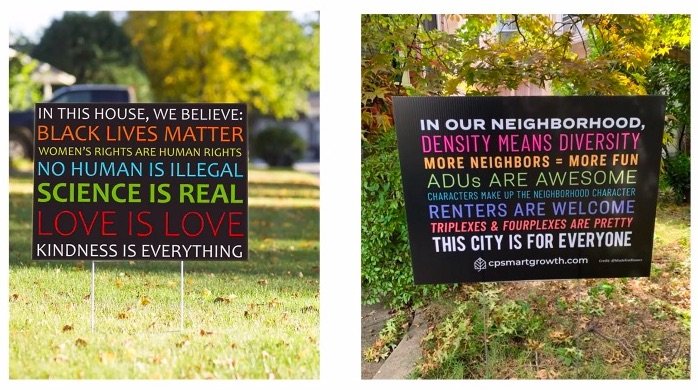ADUs Are Awesome: Living Up to Community Values
“We’re at the same place we were in the 1960s,” Dwight Merriam laments to the crowd on Zoom.
He’s talking about intergenerational wealth—how much money people pass on to their children. Specifically, he’s talking about how much more wealth White people are able to pass down than non-White ones can. “How do we get past that?” he asks.
A land-use lawyer, law professor, and past president of the American Institute of Certified Planners, Merriam has been active in Connecticut’s effort to make more housing more financially accessible to more people.
One approach he’s enthusiastic about is legalizing accessory dwelling units, also known as ADUs, granny flats, garage apartments, accessory apartments, or in-law suites. ADUs have been the subject of many recent articles, studies, and webinars—like this one from the organization DesegregateCT, which I attended to learn more about the small dwellings and how they can help address housing affordability and the racial wealth gap.
In the webinar, Merriam expounded on the multiple benefits of ADUs, which he says “enable us to take care of empty-nesters and single people and young people.”
Specifically, they:
● Create value by raising what a property is worth.
● Provide income to help the less affluent afford mortgage payments and taxes.
● Offer a sense of safety for older people who may feel more comfortable having someone they know living close at hand.
● Supply a path of entry to people who otherwise couldn’t afford to live in a town.
● Mitigate the effects of climate change by using less electricity and water than larger dwellings—and, when built near public transportation, allowing more people to get out of their cars.
But it’s the equity issue that Merriam’s is most passionate about. He is among a small but growing cadre of proponents of permitting owners of ADUs to subdivide their land and sell the second unit. Purchasers can then “begin to achieve the intergenerational wealth that comes from ownership.”
California passed legislation permitting such sales last year.
Other participants in the webinar were equally passionate. Kyle Shiel, a senior planner for the town of Manchester, showed a photo of the familiar “In this house, we believe” yard sign. “In a lot of communities, you’ll see signs indicating these sentiments,” he noted. “But they won’t allow ADUs.”
Some people object to ADUs because they worry about parking congestion, overcrowding, changing the look of a neighborhood, or the potential for noisy tenants. Many studies have found these concerns to be misplaced, noting that ADUs tend to be highly dispersed and blend into neighborhoods, and that onsite landlords keep the risk of noise or neglect low.
Shiel is frustrated with people who say they are committed to racial equity yet don’t see how resisting ADUs (and other modest density increases) helps perpetuate racial segregation. For him, supporting more housing is a way for people to put their money where their mouth is.
“We need to live up to our values,” he says.
Last year, Connecticut approved a new law requiring towns to permit accessory apartments of up to 1,000 square feet or 30% the size of the main dwelling by right. That means that any homeowner can build one without getting special permission from their town. (Towns were allowed to opt out of the requirement if they did so by the end of 2021.)
In Swarthmore, only senior citizens or people with disabilities who want to house a caregiver can legally create an accessory apartment. But the borough is actually home to a bunch of ADUs. Most of them were built decades before the local zoning code was drafted in 1976 and have therefore been grandfathered in. Our community is dotted with elegant carriage houses and old-fashioned garages that might make great homes.
If you live in an ADU, or rent one out—or if you know someone who does—I’d love to hear about it. Please email me at rachel@rachelpastan.com.
